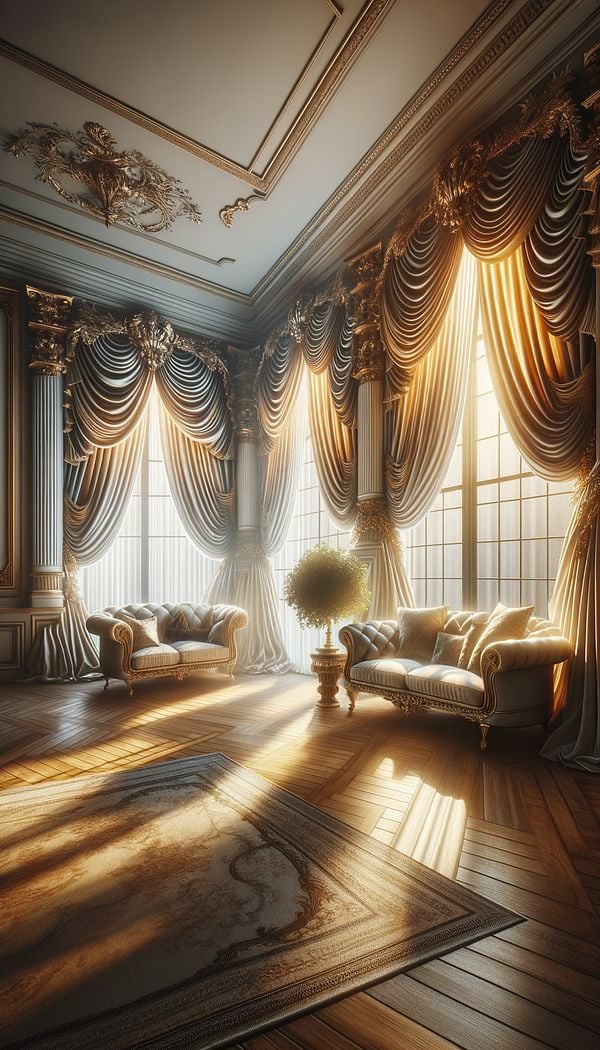What is Antique Satin?
Antique satin is a type of woven fabric known for its glossy surface and dull back.
Description
Antique satin refers to a specific type of satin fabric that has an aged or vintage appearance, giving it a distinct charm popular in various interior design settings. This fabric is woven using a combination of textures, typically featuring a glossy front surface that contrasts with a dull, matte back. The name 'antique satin' specifically denotes the textured, slightly lustrous finish that resembles fabrics used in older, classic interior designs, including those of historic homes and establishments.
The creation of antique satin involves a unique weaving technique that blends threads of different sheens and weights, often incorporating slubbed (slightly twisted or uneven) yarns to achieve its characteristic texture. This process not only gives the fabric its vintage look but also adds depth and complexity to its appearance. Antique satin is predominantly made from silk, although modern versions can also be found in synthetic materials like polyester, which offer greater durability and ease of care.
Beyond its aesthetic appeal, antique satin is valued for its versatility. It can be used in a variety of applications, ranging from draperies and upholstery to decorative pillows and bedding. Its subtle sheen introduces an element of sophistication and elegance, making it a favored choice for adding a touch of historical elegance to contemporary interiors.
Usage
Antique satin is often chosen for its luxurious texture and historical connotations, making it a popular choice for window treatments like drapes and valances, as well as for upholstery on furniture pieces such as sofas and chairs. In addition to its use in soft furnishings, antique satin can also be found in decorative accessories, including throw pillows and bed linens, where it adds a soft, reflective dimension to the room's overall decor.
FAQs
-
How is antique satin different from regular satin?
Antique satin differs from regular satin primarily in its vintage appearance and textured surface. While both have a glossy front, antique satin features a more subdued luster and often incorporates slubbed yarns for added texture, contrasting the smoother finish of regular satin.
-
Can antique satin be used in modern interiors?
Yes, antique satin can be beautifully incorporated into modern interiors. Its subtle sheen and textured finish add depth and sophistication, making it an excellent choice for accent pieces or as a contrasting texture among more contemporary materials.
-
Is antique satin difficult to care for?
The care requirements for antique satin depend on its material composition. Silk versions require more delicate handling and professional cleaning, while synthetic versions are more durable and can often be gently washed at home. Always check the fabric's care instructions for the best guidance.
Practical Application
When incorporating antique satin into your interior design, consider using it in areas where its reflective quality can enhance the lighting of a room. It works particularly well in places that receive natural light or are well-lit, as this highlights the fabric's subtle luster. For an elegant and cohesive look, pair antique satin with materials that have a contrasting texture, such as rustic wood or sleek metal, to create depth and interest in your space.
-
Materials & Textiles360 articles
-
Decorative Techniques322 articles
-
Textiles & Upholstery252 articles
-
Decorative Objects240 articles
-
Window Treatments65 articles
-
Dye-lotA dye-lot refers to a batch of material dyed in the same dyeing process, ensuring color uniformity among the products.
-
Fan PatternedFan patterned refers to a design motif that resembles the shape and spread of a hand-held fan.
-
Acorn TurningAcorn turning is a decorative woodworking technique.
-
Cross StretcherA cross stretcher is a structural element used in furniture design for added support and stability.
-
ReturnIn interior design, return refers to a detail where a material or element wraps around a corner or edge, creating a continuous look.
